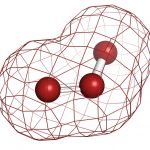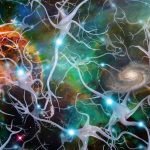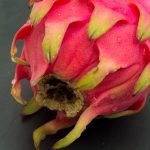Parkinson Disease: Beyond levodopa
Christopher Maloney, ND
Parkinson disease is generally considered a progressive disorder with one primary treatment. However, recent research into Parkinson disease impairment processes shows “abnormal metabolic network activities involving several cortical and subcortical systems,”1 resulting in a heterogeneous presentation and the possibility of multiple naturopathic interventions.
Before we get into the biochemistry, let’s all take a deep breath and understand that we can make a difference in these patients’ lives. It can be very daunting to work with patients having Parkinson disease, and we need to help oppose the mindset that this must be progressive and that for many it is the equivalent of a slow death sentence. Something as simple as prescribing a patient tango dancing can make a 30% difference in multiple function test results over the course of a year.2 How much more can we do with a complete program?
Drugs and Cyborgs
The standard treatment for Parkinson disease is the drug levodopa. For years, the addition of levodopa has been discussed as both helping with symptoms and possibly worsening the progression of the disease. Most recently, the addition of levodopa has been clearly associated with a worsening of muscle dystonias, and adjuvant therapies, including dopamine agonists, catechol-O-methyl-transferase inhibitors, or monoamine oxidase type B inhibitors, are associated with a variety of adverse effects.3
As a result, we are seeing more patients with brain implantations that give them increased electrical stimulation. They are readily identifiable, as many have a cyborg-like appearance. Despite the extraordinary appearance, the long-term results of many brain stimulation surgical procedures are unknown and may have adverse effects, including death. An excellent study4 of the clinical evidence points out that surgical outcome studies for several common surgical procedures simply have not been performed.
Undoing Levodopa
Because patients presenting with Parkinson disease will either be taking levodopa or will be considering levodopa, it makes the most sense to oppose its negative effects within a naturopathic program. While levodopa has not been shown to be neurotoxic, it leads to an increase in homocysteine.5 The brain-specific oxidative damage from homocysteine may be opposed by correct supplementation. Short-term trials of supplementation do not show improvement, but long-term trials show significant preservation of cognitive function in patients with high homocysteine level similar to that experienced by patients with Parkinson disease.6
Levodopa also increases brain levels of nitrite. Researchers speculate that both the homocysteine and nitrite elevations contribute to common vitamin B12 deficiencies in patients with Parkinson disease.7 Other investigations in patients with Parkinson disease have shown riboflavin abnormalities but normal folic acid, vitamin B12, and vitamin B6 levels; in patients with abnormal riboflavin status, the supplementation of riboflavin and the removal of red meat from the diet resulted in 44% to 72% motor improvement over a 6-month period.8
Unplugging the Main Lines
The removal of red meat from the diet of a patient with Parkinson disease has a sound basis. Having the highest intake of iron increases the risk of Parkinson disease almost as much as having a first-degree relative with the disease. The effect seems to be compounded by high intakes of manganese.9
However, the risk of Parkinson disease from high iron intake pales in comparison with the risk from extended constipation. One study10 found that between 60% and 80% of patients with Parkinson disease suffered from extended constipation and that the constipation preceded any motor symptoms by as much as 20 years. Not surprisingly, the constipation was often compounded by a lack of thirst that worsened throughout the patient’s lifetime.
A factor contributing to constipation is the extreme anxiety common among patients with Parkinson disease. Many are anxious long before they show motor symptoms. The addition of progressive disease worsens underlying anxiety. As many as 40% of patients with Parkinson disease experience clinically significant anxiety, and few are treated.11
Tolle Causam
Various researchers have speculated about a toxic agent from the gastrointestinal tract contributing to Parkinson disease. One possible contributor is Helicobacter pylori, whose eradication slows the progression of Parkinson disease.12 However, there are likely multiple offenders because the addition of probiotics often leads to a resolution of constipation.13
What might trigger a constipated, meat-eating, highly anxious individual to develop Parkinson disease? Researchers have found influenza A virus within the substantia nigra in brain sections from patients with Parkinson disease and speculate that it may have acted as a trigger for autoimmune response.14 If we look at the model of environmental assault, infectious triggers, chronic stress, and oxidative damage, it becomes evident that a naturopathic model can affect the mean 9 years from diagnosis to death.
Mother Nature’s Options
Ginkgo biloba investigations have shown in multiple rat models that high-dose Gingko prevents induced progression of Parkinson disease, but we have no human studies to date.15 The flavonoid baicalein (from Scutellaria baicalensis) blocks in vitro progression in rats. Both creatine and coenzyme Q10 have successfully slowed progression in mouse models. While success in animals has been known for almost 10 years, we have yet to see even small human trials in the literature. It is almost as if the experts in Parkinson disease would rather wire up their patients than try a few supplements.
Patients experiencing adverse effects from levodopa might consider supplementing with Mucuna pruriens. An Ayurvedic combination of powders was found to be effective in treating Parkinson disease, and one of the ingredients, Mucuna, contained levodopa.16 The powdered form may provide the relief of levodopa, with fewer adverse effects; it also shows better absorption, more rapid relief, and longer elevated blood levels.17 Its one disadvantage is that is unpatentable, so its clinical success has not led to widespread use.
Rather than relying solely on Mucuna, we should focus on the different aspects of the Ayurvedic treatment. The “concoction in cow’s milk of powdered Mucuna pruriens and Hyoscyamus reticulatus seeds and Withania somnifera and Sida cordifolia roots”18(p124) that the Ayurvedic practitioners came up with before researchers isolated out the “active compound” may well have additional properties beyond dopamine replacement. The Withania component independently slows Parkinson disease progression in mouse models.
We know enough to realize that wisdom in medicine cannot be reduced to a single component. Using the additive, rather than the reductionist, model of Parkinson disease can lead us to better outcomes.
 Christopher Maloney, ND focuses on working with patients for whom nothing has worked. He blogs as Alternative Health Answers and tweets as Naturopathealth. His Web site, maloneymedical.com, has received 100 000 hits in the past year. Please take his ideas and his research and use them to help others.
Christopher Maloney, ND focuses on working with patients for whom nothing has worked. He blogs as Alternative Health Answers and tweets as Naturopathealth. His Web site, maloneymedical.com, has received 100 000 hits in the past year. Please take his ideas and his research and use them to help others.
References
- Jellinger K. Heterogenous mechanisms of mild cognitive impairment in Parkinson’s disease [published online ahead of print September 30, 2011]. J Neural Transm. doi:10.1007/s00702-011-0716-4. Medline:21960008
- Duncan RP, Earhart GM. Randomized controlled trial of community-based dancing to modify disease progression in Parkinson disease [published online ahead of print September 29, 2011]. Neurorehabil Neural Repair. doi:10.1177/1545968311421614. Medline:21959675
- Stowe R, Ives N, Clarke CE, et al. Evaluation of the efficacy and safety of adjuvant treatment to levodopa therapy in Parkinson’s disease patients with motor complications. Cochrane Database Syst Rev. 2010;(7):CD007166.
- Clarke CE, Moore AP. Parkinson’s disease. Clin Evid (Online). 2007;2007:e1203. http://www.ncbi.nlm.nih.gov/pmc/articles/PMC2943804/?tool=pubmed. Accessed December 10, 2011.
- Müller T, Hefter H, Hueber R, et al. Is levodopa toxic? J Neurol. 2004;251(suppl 6):VI/44-VI/46.
- Malouf R, Grimley Evans J. Folic acid with or without vitamin B12 for the prevention and treatment of healthy elderly and demented people. Cochrane Database Syst Rev. 2008;(4):CD004514.
- Qureshi GA, Qureshi AA, Devrajani BR, Chippa MA, Syed SA. Is the deficiency of vitamin B12 related to oxidative stress and neurotoxicity in Parkinson’s patients? Neurol Disord Drug Targets. 2008;7(1):20-27.
- Coimbra CG, Junqueira VB. High doses of riboflavin and the elimination of dietary red meat promote the recovery of some motor functions in Parkinson’s disease patients. Braz J Med Biol Res. 2003;36(10):1409-1417.
- Powers KM, Smith-Weller T, Franklin GM, Longstreth WT Jr, Swanson PD, Checkoway H. Parkinson’s disease risks associated with dietary iron, manganese, and other nutrient intakes. Neurology. 2003;60(11):1761-1766.
- Ueki A, Otsuka M. Life style risks of Parkinson’s disease: association between decreased water intake and constipation. J Neurol. 2004;251(suppl 7):vII18-vII23.
- Walsh K, Bennett G. Parkinson’s disease and anxiety. Postgrad Med J. 2001;77(904):89-93.
- Dobbs SM, Dobbs RJ, Weller C, et al. Differential effect of Helicobacter pylori eradication on time-trends in brady/hypokinesia and rigidity in idiopathic parkinsonism. Helicobacter. 2010;15(4):279-294.
- Cassani E, Privitera G, Pezzoli G, et al. Use of probiotics for the treatment of constipation in Parkinson’s disease patients. Minerva Gastroenterol Dietol. 2011;57(2):117-121.
- Rohn TT, Catlin LW. Immunolocalization of influenza A virus and markers of inflammation in the human Parkinson’s disease brain. PLoS One. 2011;6(5):e20495. http://www.ncbi.nlm.nih.gov/pmc/articles/PMC3105060/?tool=pubmed. Accessed December 10, 2011.
- Beal MF. Bioenergetic approaches for neuroprotection in Parkinson’s disease. Ann Neurol. 2003;53(suppl 3):S39-S48.
- Lieu CA, Kunselman AR, Manyam BV, Venkiteswaran K, Subramanian T. A water extract of Mucuna pruriens provides long-term amelioration of parkinsonism with reduced risk for dyskinesias. Parkinsonism Relat Disord. 2010;16(7):458-465.
- Katzenschlager R, Evans A, Manson A, et al. Mucuna pruriens in Parkinson’s disease: a double blind clinical and pharmacological study. J Neurol Neurosurg Psychiatry. 2004;75(12):1672-1677.
- Nagashayana N, Sankarankutty P, Nampoothiri MR, Mohan PK, Mohanakumar KP. Association of L-DOPA with recovery following Ayurveda medication in Parkinson’s disease. J Neurol Sci. 2000;176(2):124-127.










